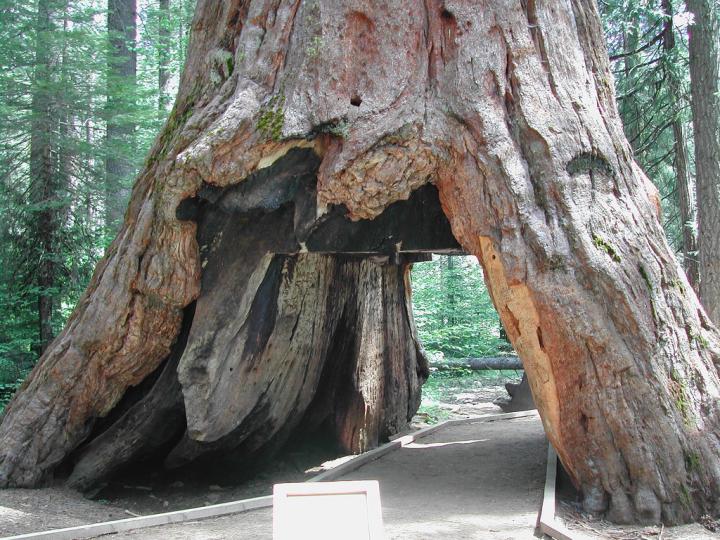
During a powerful windstorm over the weekend in California’s Calaveras Big Trees State Park, resulted in the toppling of the iconic “Tunnel Tree”. This, and many other ancient Sequoia trees in the region, can live up to 3,000 years old, though the age of this particular tree is unknown.
These forest giants were instrumental during the late part of the 19th century to promote parks and visitors during a new age of federal and state park creation. When park managers originally tunneled through these trees, the parks service allowed horses and vehicles to pass within their bases. However, tunneling through live trees is now a thing of the past, and only park visitors are allowed to walk through these unique tunnels.
According to the National Parks Service, “Our expectations of national parks have changed immensely during the past half century. When our national parks were young, cutting tunnels through sequoia trees was a way to popularize the parks and gain support for their protection. In those early days, national parks usually were managed to protect individual features rather than to protect the integrity of the complete environment. Today, we realize that our national parks represent some of the last primeval landscapes in America, and our goal in the parks is to allow nature to run its course with as little interference from humans as possible. Tunnel trees had their time and place in the early history of our national parks. But today sequoias which are standing healthy and whole are worth far more.”
There are still several large trees in the Giant Forest Sequoia Grove. The tallest is the General Sherman Tree, which stands 275 feet (83 m) tall, and over 36 feet (11 m) in diameter at the base. Sequoia trunks remain wide high up. Sixty feet above the base, the Sherman Tree is 17.5 feet (5.3 m) in diameter. To see a list with the 30 largest Sequoias go here.
To read more on monumental trees in the Pacific Northwest, go here or here.


